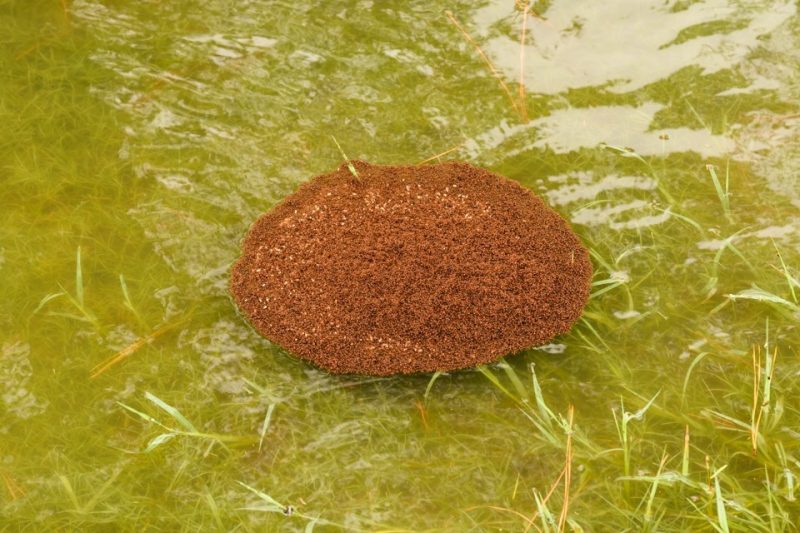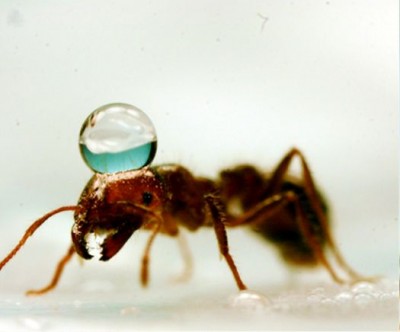 Who would have thoughts that the smallest of creatures would have their own adaptations to escape hurricanes!
Who would have thoughts that the smallest of creatures would have their own adaptations to escape hurricanes!
Citizens in Houston, Texas have spotted colonies of fire ants assembled together, battling out the flood-ravaged area by clinging on to one another until they reach dry land.
At a glance, these tightly woven colonies do not look fearsome at all. In fact, it is almost easy to mistake these terracotta-brown colonies for a pile of dirt.
However, looks can be deceiving -- the fact that even floods are unable to drown them should be a good indicator as to how stubborn and hazardous these colonies really are.
A Unique Link
So, how do fire ants assemble to form a nearly unbreakable link?

To start off, fire ants already have a genetic advantage. A single fire ant is hydrophobic (meaning it can repel water) to some degree. Their skin cuticle is rough and can trap air against its body.
When combined with an estimated 8,000 other ants, their ability to repel water increases. In fact, by forming a raft, the ants trap air into pockets that allow them to float.
The mechanism by which these ants connect is quite simple. Each ant will cling to another ant’s legs, which are each divided into five segments. This allows them to form a flexible structure that can be changed readily by expanding or shortening their legs. This is especially helpful to the ants underwater, as they can shift above water so as to not drown.
Protecting The Queen!
At the center of the raft colony lies the queen, as well as larvae and pupae (unborn ants), which are given the utmost protection. One might ask - why care for the unborn ants?
From a survival perspective, the conservation of these insects ensures that the fire ant population will not die out. These ants are already thinking two steps ahead!
Surrounding the queen and the unborn ants and keeping them afloat are more ants. The wax on the fire ant’s body prevents the inner members – the queen and the unborn ants – from suffocating. The ability of these ants to trap pockets of air is used by ants underwater to breathe as they hold onto the colony. These rafts can last up to three weeks, which is pretty impressive.
If you provoke these ants, they would most likely always choose to fight, crawling upon you. They do get their name for a reason – fire ants are aggressive, with fatal stings to match, if not treated.
Only in times of need should you approach these colonies, and when you do, be cautious, and armed with some…dish soap. Dish soap not only renders the ants unable to cling onto one another but also removes their ability to trap the air pockets, effectively drowning them.







